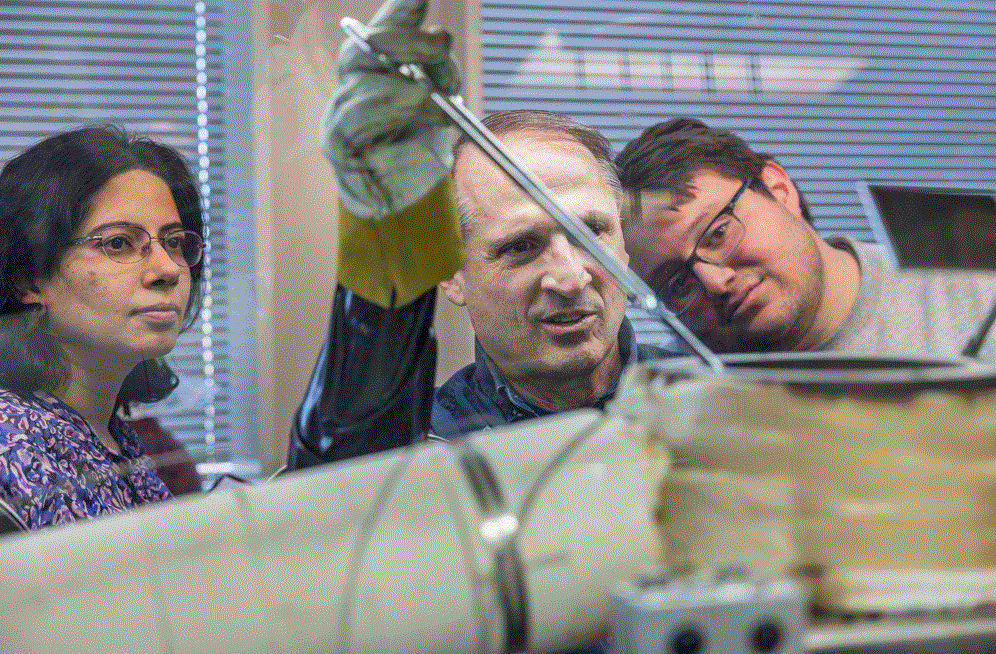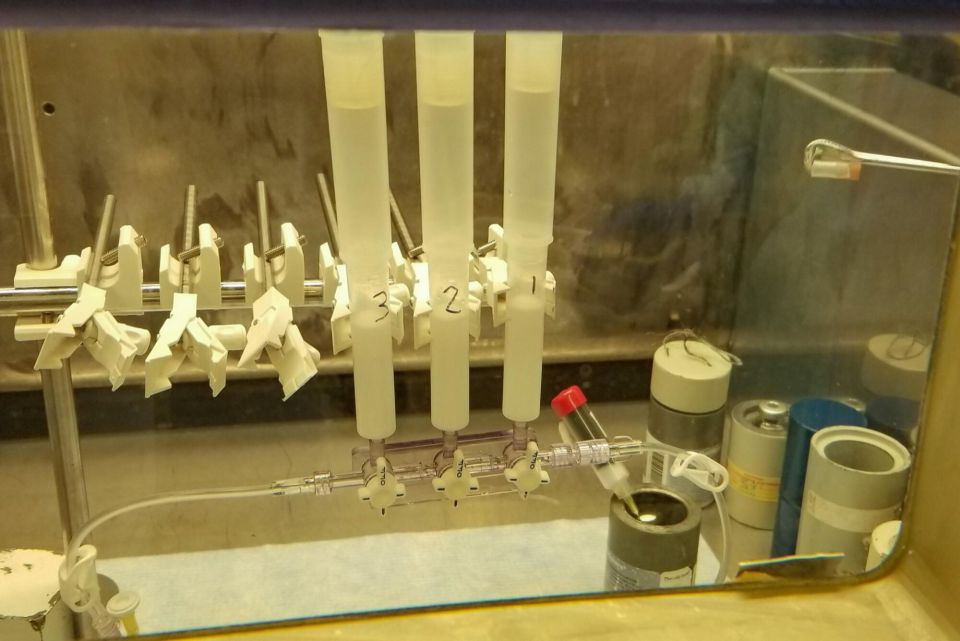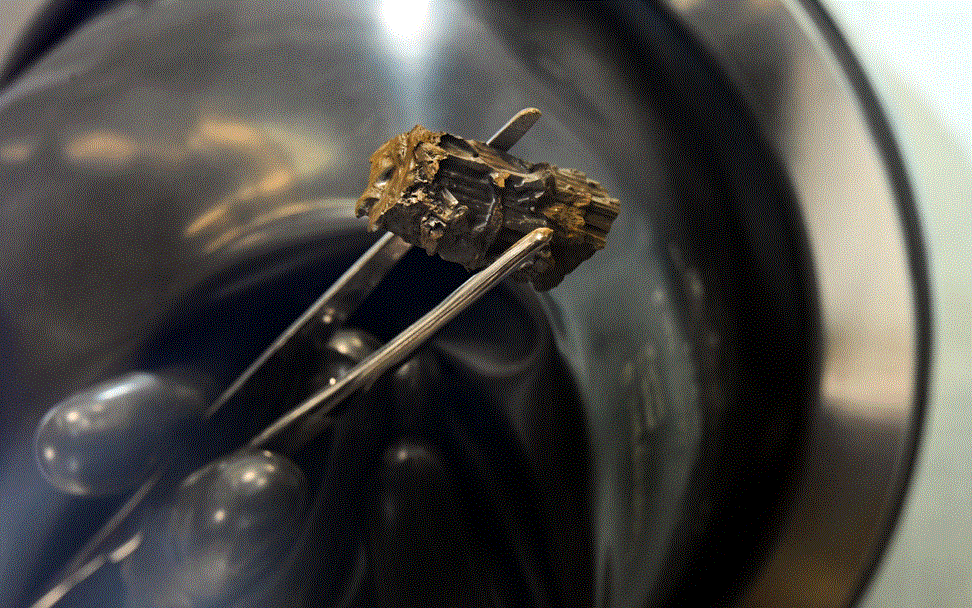Principal investigator Ruchi Gakhar (left), technician Dean Burt (center), and intern Diego Macias, shown loading salt into the loop. (Photo: INL)
The Department of Energy announced March 31 that a new Molten Salt Flow Loop Test Bed at Idaho National Laboratory recently went through its inaugural test run. The closed-loop test system will allow for continuous monitoring and analysis of chloride-based molten salt reactor technology and instruments before the construction of the Southern Company/TerraPower Molten Chloride Reactor Experiment. MCRE—an experimental fast-spectrum molten salt research reactor—will be built at INL’s repurposed Zero Power Physics Reactor, which has been renamed LOTUS (Laboratory for Operation and Testing in the United States).
Unique and in real time: “Most test loops focus on testing the structural materials,” said Ruchi Gakhar, lead scientist for INL’s Advanced Technology of Molten Salts department, quoted in a March 31 news article from INL. “In contrast, our loop at INL is unique because it serves as a test bed for advanced electrochemical sensors and bubbler instruments. These instruments allow us to monitor and investigate material performance in real time while the loop is still operational. This approach has not been implemented or explored in flow loops at other institutions.” Gakhar spent three years on a team developing the system under INL’s Laboratory Directed Research and Development program.
A 4.5-kg lithium chloride–potassium chloride mixture circulates inside the system, topped by an inert cover gas. Researchers can insert or remove samples without stopping the flow, which INL likens to checking the oil in a car without turning off the engine. Between test runs, the salt can be drained and stored in a tank, which will increase the test bed’s usage and longevity, according to the DOE.
The system has five electrode ports that allow scientists to control the chemical state of the salt and monitor corrosion in real time, according to INL. Bubbler dip-tube ports can be used to measure properties like fluid density and surface tension, while other devices measure temperature changes in different parts of the system.
Insights for MCRE: Collaborating with Southern Company and TerraPower on MCRE, INL will synthesize and handle the fuel salt, load and operate the reactor, and perform all post-operation deactivation and disassembly work.
The molten salt flow loop will help the MCRE team understand corrosion and instrument performance in a high-temperature molten chloride environment. “This will be a big step toward building [molten salt reactors] that last longer and require less maintenance, reducing costs and improving reliability,” said John Carter, manager of the Advanced Technology of Molten Salts department.






